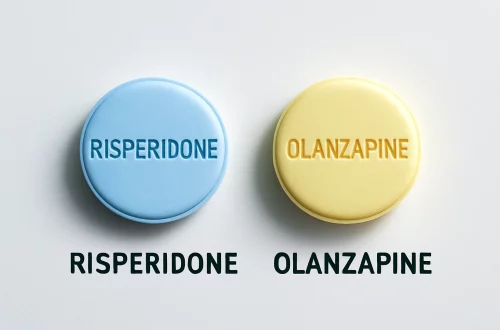
Debunking the Myth: Should You Lie Down After Botox Treatments?
Botox treatments have become increasingly popular for individuals seeking a more youthful appearance without the need for invasive surgery. This non-surgical procedure involves injecting a purified protein into specific areas of the face to reduce the appearance of fine lines and wrinkles. While many people are excited about the immediate benefits of Botox, there are numerous myths and misconceptions surrounding the treatment, particularly regarding post-procedure care.
One such myth is the idea that patients should lie down immediately after receiving Botox injections. This belief is often perpetuated by anecdotal evidence and personal experiences shared online. However, the validity of this advice is questionable, particularly when considering the clinical guidelines provided by medical professionals. Understanding the rationale behind post-Botox care is crucial for anyone considering this treatment, as it can impact the results and overall experience.
This article aims to explore this common misconception and provide clarity on the best practices following a Botox treatment. By debunking myths and examining expert opinions, we can help individuals make informed decisions about their post-treatment care.
Understanding Botox: How It Works
To appreciate the importance of post-Botox care, it’s essential to first understand how Botox works. Botox, or botulinum toxin, is derived from the bacteria Clostridium botulinum. When injected into specific muscles, it temporarily blocks nerve signals that cause muscle contractions. This action effectively smooths out wrinkles and fine lines, creating a more youthful appearance.
The effects of Botox typically start to appear within a few days after the treatment, with optimal results becoming visible within one to two weeks. The duration of these results can last from three to six months, depending on various factors such as the individual’s skin type, age, and the area treated.
During the procedure, a qualified practitioner uses a fine needle to inject the Botox solution into targeted areas. The process is relatively quick, often taking only 15 to 30 minutes, and most patients experience minimal discomfort. Following the treatment, patients are usually advised to remain upright for a certain period, but the specifics can vary based on individual circumstances.
Understanding the mechanics of Botox helps illuminate why post-treatment care is crucial. If the product migrates from the intended injection site, it can lead to undesirable effects such as drooping eyelids or uneven facial expressions. This is where the myth regarding lying down comes into play, as many believe that lying flat may facilitate this migration.
However, the reality is that while some precautions should be taken, lying down immediately may not be necessary for everyone. Instead, experts suggest remaining upright for a few hours post-treatment to ensure the Botox stays in place. This approach helps to minimize the risk of complications while still allowing patients to go about their day.
Common Misconceptions About Post-Botox Care
One of the most prevalent misconceptions surrounding Botox treatments is the notion that patients should avoid any physical activity or movement after their injections. Many believe that even slight movements, such as raising eyebrows or smiling, could lead to adverse effects. While it is true that patients should be cautious, an excessive restriction on movement post-treatment is not supported by medical evidence.
Another common myth is that individuals should avoid lying down entirely for an extended period after receiving Botox. This stems from concerns about the potential migration of the toxin. While it is advisable to remain upright for a few hours, lying down for a short time after this period is generally safe.
Moreover, some people believe that certain activities, such as exercising or bending over, should be avoided for an extended timeframe after Botox injections. While it is wise to refrain from strenuous activities for at least 24 hours, light exercise and gentle movements are typically acceptable. The key is to listen to your body and respond accordingly.
It’s also worth noting that avoiding alcohol and certain medications before and after the treatment is often emphasized. Alcohol can thin the blood and increase the risk of bruising at the injection site. While it’s crucial to follow your practitioner’s specific guidelines regarding alcohol and medication, these precautions should not be exaggerated.
In conclusion, while caution is warranted in the hours following a Botox treatment, many of the common beliefs about post-care practices are overstated. Patients should focus on following their provider’s specific recommendations rather than adhering to generalized rules that may not apply to everyone.
Best Practices After a Botox Treatment
After receiving Botox injections, adhering to recommended best practices can significantly influence the treatment’s effectiveness and minimize the risk of complications. While individual recommendations may vary by practitioner, several key guidelines are widely accepted in the cosmetic community.
First and foremost, patients should remain upright for at least four hours following their injections. This position helps prevent the migration of the toxin and allows the Botox to settle effectively in the targeted muscles. Sitting or standing can also help reduce the likelihood of swelling and bruising.
Applying gentle pressure to the treated areas is discouraged in the immediate aftermath of the treatment. Patients should avoid massaging or rubbing the injection sites, as this can disrupt the placement of the Botox and lead to uneven results. Instead, focus on keeping the area clean and free from any irritants.
Hydration is another essential aspect of post-Botox care. Drinking plenty of water helps to keep the skin hydrated and can contribute to the overall healing process. However, patients should avoid consuming alcohol or excessive caffeine for at least 24 hours post-treatment, as these substances can exacerbate bruising and swelling.
It is also crucial for patients to monitor their bodies for any unexpected side effects, such as severe headaches, drooping eyelids, or difficulty swallowing. While these complications are rare, being aware of potential reactions can help ensure timely medical attention if necessary.
Lastly, scheduling a follow-up appointment with the practitioner after the initial treatment can provide an excellent opportunity to discuss any concerns and evaluate the results. This follow-up can also help patients understand when to schedule their next treatment, ensuring they maintain their desired appearance over time.
By adhering to these best practices and maintaining open communication with their healthcare provider, patients can enhance their overall experience with Botox and achieve the beautiful results they desire.
Consulting with Professionals: The Key to Safe Botox Treatments
When considering Botox treatments, consulting with qualified professionals is essential for ensuring safety and optimal results. The choice of practitioner can significantly influence both the procedure and the post-treatment experience.
Individuals should seek out licensed medical professionals who specialize in cosmetic treatments. This may include dermatologists, plastic surgeons, or trained aesthetic practitioners. Checking credentials and looking for reviews from previous patients can help in making an informed decision about who to trust with your care.
It is also advisable to have an initial consultation before the treatment. During this meeting, patients can express their concerns, ask questions, and discuss any specific needs or preferences. A reputable provider will take the time to explain the procedure, potential side effects, and post-treatment care in detail, allowing patients to feel comfortable and informed.
Furthermore, discussing any existing medical conditions or medications with the practitioner is crucial. Certain conditions or medications can influence the effectiveness of Botox or increase the risk of complications. Open communication ensures that the practitioner can tailor the treatment to the individual’s unique needs.
In summary, ensuring a successful Botox experience relies heavily on consulting with the right professionals. By doing thorough research and maintaining communication with healthcare providers, patients can significantly enhance their safety and satisfaction with the treatment.
In conclusion, while myths surrounding post-Botox care can create confusion, understanding the facts is vital for achieving the best results. Following professional guidelines, communicating with healthcare providers, and maintaining a cautious approach can help individuals enjoy the benefits of Botox safely and effectively.
**Disclaimer**: This article is for informational purposes only and should not be considered medical advice. Always consult with a qualified healthcare professional regarding any health concerns or before undergoing medical treatments.




